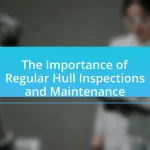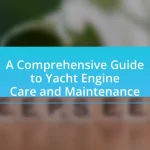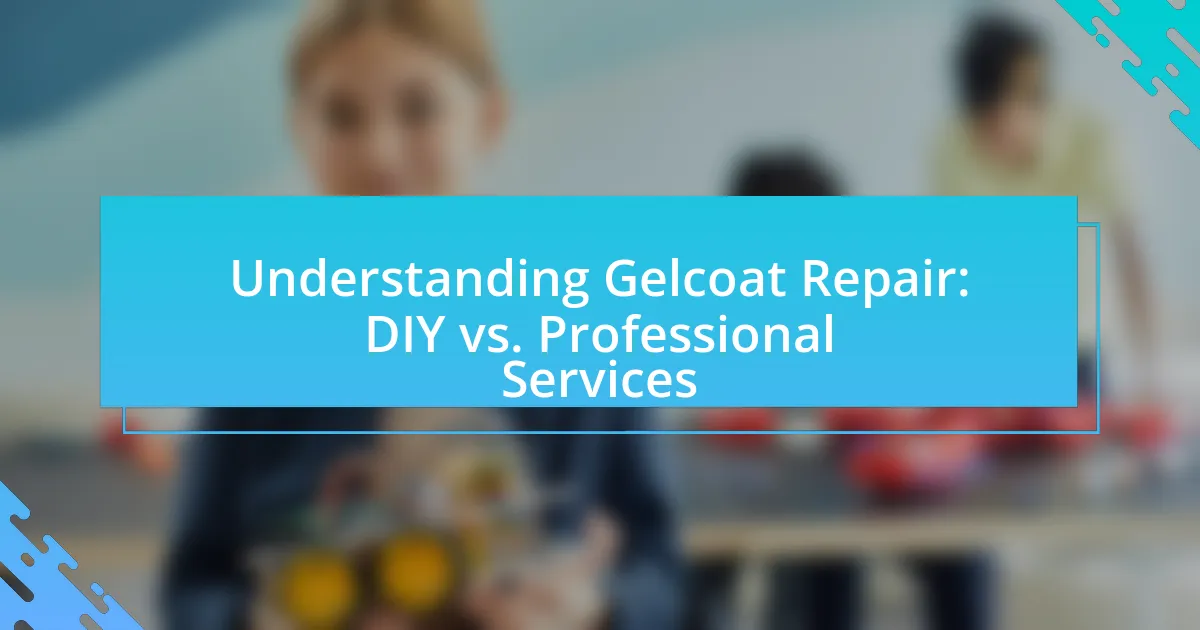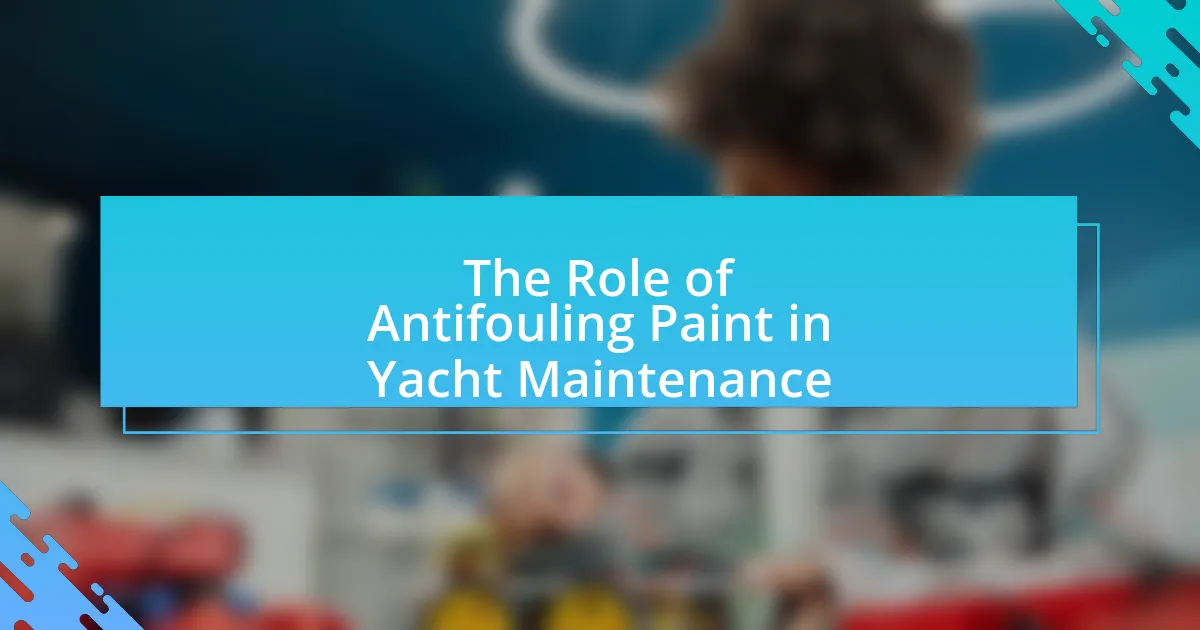A Seasonal Maintenance Checklist for Yacht Owners is an essential tool designed to keep yachts in optimal condition throughout the boating season. This checklist encompasses critical tasks such as engine inspection, fuel and oil level checks, hull cleaning, safety equipment verification, and electrical system assessments. Regular adherence to this checklist not only enhances safety and performance but also extends the lifespan of the yacht by up to 30%. Neglecting these maintenance tasks can lead to significant risks, including equipment failure and costly repairs. The article outlines key components of the checklist, prioritization of tasks, and best practices for effective maintenance management.
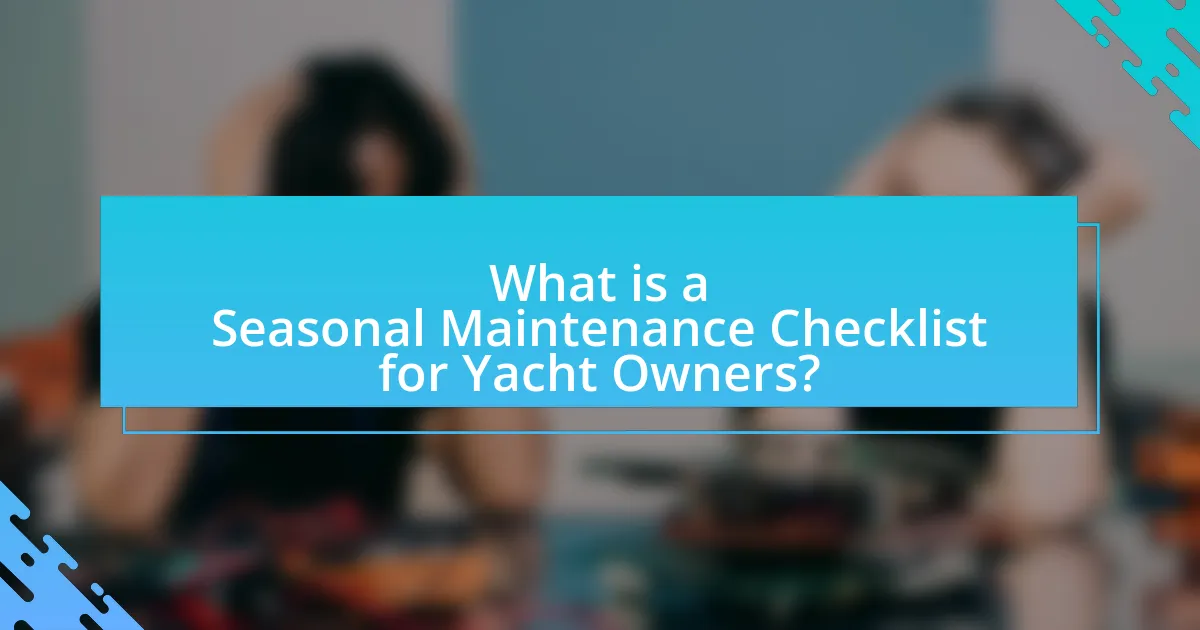
What is a Seasonal Maintenance Checklist for Yacht Owners?
A Seasonal Maintenance Checklist for Yacht Owners is a comprehensive list of tasks designed to ensure the yacht remains in optimal condition throughout the boating season. This checklist typically includes inspecting and servicing the engine, checking the fuel and oil levels, cleaning and maintaining the hull, inspecting safety equipment, and ensuring all electrical systems are functioning properly. According to the American Boat and Yacht Council, regular maintenance can extend the lifespan of a yacht and enhance safety, making it essential for owners to adhere to such checklists.
Why is seasonal maintenance important for yacht owners?
Seasonal maintenance is crucial for yacht owners because it ensures the vessel’s safety, performance, and longevity. Regular maintenance helps identify and address potential issues, such as engine problems or hull damage, before they escalate into costly repairs. According to the American Boat and Yacht Council, routine inspections and maintenance can extend the lifespan of a yacht by up to 30%. This proactive approach not only enhances the yacht’s reliability but also ensures compliance with safety regulations, ultimately protecting the owner’s investment and providing a safer experience on the water.
What are the potential risks of neglecting seasonal maintenance?
Neglecting seasonal maintenance can lead to significant risks, including equipment failure, safety hazards, and costly repairs. For instance, failing to inspect and service critical systems like the engine, electrical components, and hull can result in breakdowns while at sea, which may endanger the crew and vessel. Additionally, neglect can cause deterioration of materials, such as corrosion of metal parts and degradation of seals, leading to leaks and structural damage. According to the American Boat and Yacht Council, regular maintenance can prevent up to 80% of potential failures, underscoring the importance of adhering to a seasonal maintenance schedule to ensure safety and longevity of the yacht.
How can seasonal maintenance enhance the lifespan of a yacht?
Seasonal maintenance can significantly enhance the lifespan of a yacht by ensuring that all systems and components are regularly inspected, serviced, and repaired as needed. Regular checks on the hull, engine, and electrical systems prevent deterioration caused by environmental factors such as saltwater, UV exposure, and moisture. For instance, antifouling paint applied during seasonal maintenance protects the hull from marine growth, which can lead to increased drag and fuel consumption. Additionally, routine engine maintenance, including oil changes and filter replacements, can prevent mechanical failures and extend engine life. According to the American Boat and Yacht Council, proper maintenance can increase a vessel’s lifespan by up to 30%.
What are the key components of a seasonal maintenance checklist?
The key components of a seasonal maintenance checklist for yacht owners include inspecting the hull, checking the engine and fuel systems, servicing the electrical systems, examining safety equipment, and maintaining the interior and exterior. Inspecting the hull involves looking for signs of damage, blisters, or growth that could affect performance. Checking the engine and fuel systems ensures that all components are functioning properly and free of leaks, which is critical for safety and efficiency. Servicing the electrical systems includes testing batteries, wiring, and navigation equipment to prevent failures at sea. Examining safety equipment, such as life jackets and fire extinguishers, ensures compliance with regulations and readiness for emergencies. Maintaining the interior and exterior involves cleaning, checking for wear and tear, and ensuring that all amenities are in working order, which enhances the overall experience on the yacht.
What specific areas should be inspected during seasonal maintenance?
During seasonal maintenance, specific areas that should be inspected include the hull, engine, electrical systems, plumbing, and safety equipment. The hull inspection involves checking for cracks, blisters, and marine growth, which can affect performance and safety. The engine should be examined for oil levels, coolant, and fuel systems to ensure optimal operation. Electrical systems require inspection of batteries, wiring, and connections to prevent failures. Plumbing checks should focus on hoses, pumps, and tanks to avoid leaks and ensure proper function. Lastly, safety equipment, including life jackets, flares, and fire extinguishers, must be verified for compliance and readiness. These inspections are critical to maintaining the yacht’s performance and safety on the water.
How often should each component be maintained or checked?
Each component of a yacht should be maintained or checked at least once per season. This includes inspecting the hull, engine, electrical systems, and safety equipment. Regular checks help identify potential issues early, ensuring safety and performance. For instance, the engine oil should be changed every 100 hours of operation or at least once a year, while the hull should be cleaned and inspected for damage every season to prevent deterioration. Following these guidelines helps maintain the yacht’s integrity and prolongs its lifespan.
What seasonal maintenance tasks should yacht owners prioritize?
Yacht owners should prioritize inspecting and servicing the engine, checking the hull for damage, and maintaining the electrical systems during seasonal maintenance. Regular engine inspections ensure optimal performance and can prevent costly repairs, as engines require oil changes and filter replacements based on usage. Hull inspections are crucial for identifying any signs of wear, osmosis, or marine growth, which can affect the yacht’s performance and longevity. Additionally, maintaining electrical systems, including batteries and wiring, is essential for safety and functionality, as corrosion and wear can lead to failures. These tasks are supported by industry standards that recommend routine maintenance to enhance safety and efficiency.
What are the essential tasks for spring maintenance?
The essential tasks for spring maintenance include inspecting and cleaning the yacht’s hull, checking and servicing the engine, and ensuring all safety equipment is functional. Inspecting the hull helps identify any damage or growth that may have accumulated during winter, while engine servicing ensures optimal performance and reliability for the upcoming season. Additionally, verifying the functionality of safety equipment, such as life jackets and fire extinguishers, is crucial for compliance with maritime safety regulations. These tasks are vital for maintaining the yacht’s condition and ensuring safe operation.
What should be done during fall maintenance preparations?
During fall maintenance preparations for yachts, owners should inspect and service the engine, check the fuel system, and clean the hull. Engine inspections include changing the oil and filters, while fuel system checks involve adding fuel stabilizer to prevent degradation. Cleaning the hull removes algae and barnacles, which can affect performance. These actions are essential to ensure the yacht remains in optimal condition for winter storage and future use.

How can yacht owners effectively implement their seasonal maintenance checklist?
Yacht owners can effectively implement their seasonal maintenance checklist by creating a detailed schedule that outlines specific tasks, timelines, and responsible parties. This structured approach ensures that all necessary maintenance activities, such as inspecting the hull, checking the engine, and servicing safety equipment, are completed systematically. Research indicates that regular maintenance can extend the lifespan of a yacht and enhance safety, with studies showing that well-maintained vessels have a significantly lower risk of mechanical failure. By adhering to a comprehensive checklist and scheduling tasks at the beginning and end of the boating season, yacht owners can ensure their vessels remain in optimal condition.
What tools and resources are needed for effective maintenance?
Effective maintenance of a yacht requires a variety of tools and resources, including basic hand tools, power tools, cleaning supplies, and specialized equipment. Basic hand tools such as wrenches, screwdrivers, and pliers are essential for routine repairs and adjustments. Power tools like drills and sanders facilitate more complex tasks, while cleaning supplies, including marine-grade detergents and waxes, help maintain the yacht’s appearance and protect surfaces. Additionally, specialized equipment such as a marine battery tester, oil change pump, and a bilge pump are crucial for ensuring the yacht operates efficiently and safely. These tools and resources collectively contribute to the longevity and performance of the yacht, as regular maintenance can prevent costly repairs and enhance safety on the water.
How can technology assist in tracking maintenance tasks?
Technology assists in tracking maintenance tasks by providing tools such as maintenance management software, mobile applications, and IoT devices that streamline the scheduling, monitoring, and documentation of maintenance activities. These tools enable yacht owners to set reminders for routine checks, log completed tasks, and receive alerts for upcoming maintenance needs, ensuring that all necessary upkeep is performed on time. For instance, a study by the International Journal of Engineering Research and Applications highlights that using maintenance management systems can reduce downtime by up to 30%, demonstrating the effectiveness of technology in enhancing maintenance tracking efficiency.
What are the benefits of hiring professional services for maintenance?
Hiring professional services for maintenance ensures expertise, efficiency, and safety. Professionals possess specialized knowledge and skills that enable them to identify and address issues that may be overlooked by untrained individuals. For instance, a study by the National Association of Home Builders indicates that professional maintenance can extend the lifespan of equipment and systems by up to 30%. Additionally, hiring experts reduces the risk of accidents and costly mistakes, as they are trained to follow safety protocols and industry standards. This combination of expertise and adherence to best practices ultimately leads to better maintenance outcomes and increased value for yacht owners.
How can yacht owners create a personalized maintenance schedule?
Yacht owners can create a personalized maintenance schedule by assessing their yacht’s specific needs based on its type, usage, and manufacturer recommendations. This involves documenting maintenance tasks such as engine checks, hull cleaning, and safety equipment inspections, and scheduling them according to seasonal usage patterns. For instance, regular engine maintenance should align with the boating season, while winterization tasks should be planned before storage. Additionally, yacht owners can utilize maintenance tracking software or apps that provide reminders and logs of completed tasks, ensuring that all necessary upkeep is performed timely. This approach is supported by the fact that regular maintenance can extend the lifespan of a yacht and enhance safety, as indicated by industry standards from organizations like the American Boat and Yacht Council.
What factors should be considered when developing a maintenance timeline?
When developing a maintenance timeline for yachts, key factors include the type of maintenance required, seasonal weather conditions, and the frequency of use. The type of maintenance, such as engine servicing or hull cleaning, dictates specific timelines based on manufacturer recommendations and best practices. Seasonal weather conditions impact when maintenance should occur; for example, pre-winter preparations are crucial to prevent damage from freezing temperatures. Additionally, the frequency of use affects maintenance needs; yachts used more often may require more regular checks and servicing. These considerations ensure that the yacht remains in optimal condition and prolongs its lifespan.
How can owners adjust their checklist based on usage patterns?
Owners can adjust their checklist based on usage patterns by analyzing the frequency and type of activities performed on their yacht. For instance, if owners notice increased usage during specific seasons, they should prioritize maintenance tasks that address wear and tear associated with those activities, such as engine checks or hull cleaning. Additionally, tracking usage data, such as hours spent on the water or types of trips taken, allows owners to identify which systems require more frequent inspections or servicing. This data-driven approach ensures that the checklist remains relevant and effective, ultimately enhancing the yacht’s performance and longevity.

What common mistakes should yacht owners avoid during seasonal maintenance?
Yacht owners should avoid neglecting routine inspections during seasonal maintenance. Failing to check critical systems such as the engine, electrical components, and safety equipment can lead to costly repairs and safety hazards. For instance, the American Boat and Yacht Council emphasizes that regular maintenance checks can prevent up to 80% of mechanical failures. Additionally, overlooking the importance of cleaning and protecting the hull can result in long-term damage from marine growth and corrosion. Properly addressing these areas ensures the yacht remains in optimal condition and enhances safety on the water.
What are the most frequent oversights in yacht maintenance?
The most frequent oversights in yacht maintenance include neglecting regular engine checks, failing to inspect and clean the hull, overlooking the condition of safety equipment, and not maintaining the electrical systems. Regular engine checks are crucial as they prevent mechanical failures; studies show that 30% of yacht breakdowns are due to engine issues. Hull inspections are essential to avoid costly repairs from marine growth and damage, with 25% of yacht owners reporting issues related to hull maintenance. Safety equipment, such as life jackets and fire extinguishers, must be regularly checked, as 40% of boating accidents are linked to inadequate safety measures. Lastly, electrical systems require routine maintenance to prevent failures, which can lead to dangerous situations at sea.
How can improper maintenance affect yacht performance?
Improper maintenance can significantly degrade yacht performance by leading to mechanical failures, reduced fuel efficiency, and compromised safety. For instance, neglecting engine maintenance can result in decreased power output and increased fuel consumption, as evidenced by studies showing that poorly maintained engines can consume up to 30% more fuel than well-maintained counterparts. Additionally, failing to inspect and clean the hull can cause increased drag, which negatively impacts speed and maneuverability. Regular maintenance is essential to ensure optimal performance and longevity of the yacht.
What are the consequences of using incorrect products or tools?
Using incorrect products or tools can lead to significant damage to a yacht, including compromised safety, reduced performance, and increased repair costs. For instance, using the wrong type of antifreeze can cause engine damage, while inappropriate cleaning products may degrade surfaces or finishes. According to the American Boat and Yacht Council, improper maintenance practices can result in costly repairs, sometimes exceeding thousands of dollars, and can also void warranties. Therefore, selecting the correct products and tools is essential for maintaining the integrity and functionality of a yacht.
What best practices can enhance the effectiveness of a seasonal maintenance checklist?
To enhance the effectiveness of a seasonal maintenance checklist for yacht owners, it is essential to prioritize thoroughness and organization. A well-structured checklist should include specific tasks categorized by systems, such as engine maintenance, electrical systems, and safety equipment checks. This categorization allows for systematic inspections and ensures no critical areas are overlooked.
Additionally, incorporating a timeline for each task can improve accountability and ensure timely completion. For instance, scheduling engine checks before the boating season begins can prevent potential issues during use.
Regularly updating the checklist based on past experiences and feedback can also enhance its relevance and effectiveness. By analyzing previous maintenance records, yacht owners can identify recurring issues and adjust their checklist accordingly.
Finally, utilizing digital tools or apps for checklist management can streamline the process, allowing for easy access and tracking of completed tasks. This approach not only improves efficiency but also provides a clear record of maintenance history, which is valuable for future reference or resale.
How can yacht owners stay organized and consistent with their maintenance tasks?
Yacht owners can stay organized and consistent with their maintenance tasks by implementing a structured maintenance schedule and utilizing digital tools for tracking. A structured schedule allows yacht owners to outline specific tasks, such as engine checks, hull cleaning, and safety equipment inspections, at regular intervals throughout the year. Digital tools, such as maintenance management apps, can send reminders and track completed tasks, ensuring that no maintenance is overlooked. Research indicates that regular maintenance can extend the lifespan of a yacht and enhance safety, making it essential for owners to adhere to their schedules.
What tips can help ensure thorough inspections and repairs?
To ensure thorough inspections and repairs, yacht owners should follow a systematic approach that includes creating a detailed checklist, utilizing professional services when necessary, and conducting regular maintenance. A detailed checklist helps identify all critical components that require inspection, such as the hull, engine, and electrical systems. Engaging professional services, such as marine surveyors or certified technicians, ensures that complex systems are evaluated accurately, as they possess specialized knowledge and tools. Regular maintenance, including cleaning, lubricating, and replacing worn parts, prevents issues from escalating and maintains the yacht’s overall condition. According to the American Boat and Yacht Council, regular inspections can reduce the risk of costly repairs by up to 30%, highlighting the importance of a proactive maintenance strategy.







